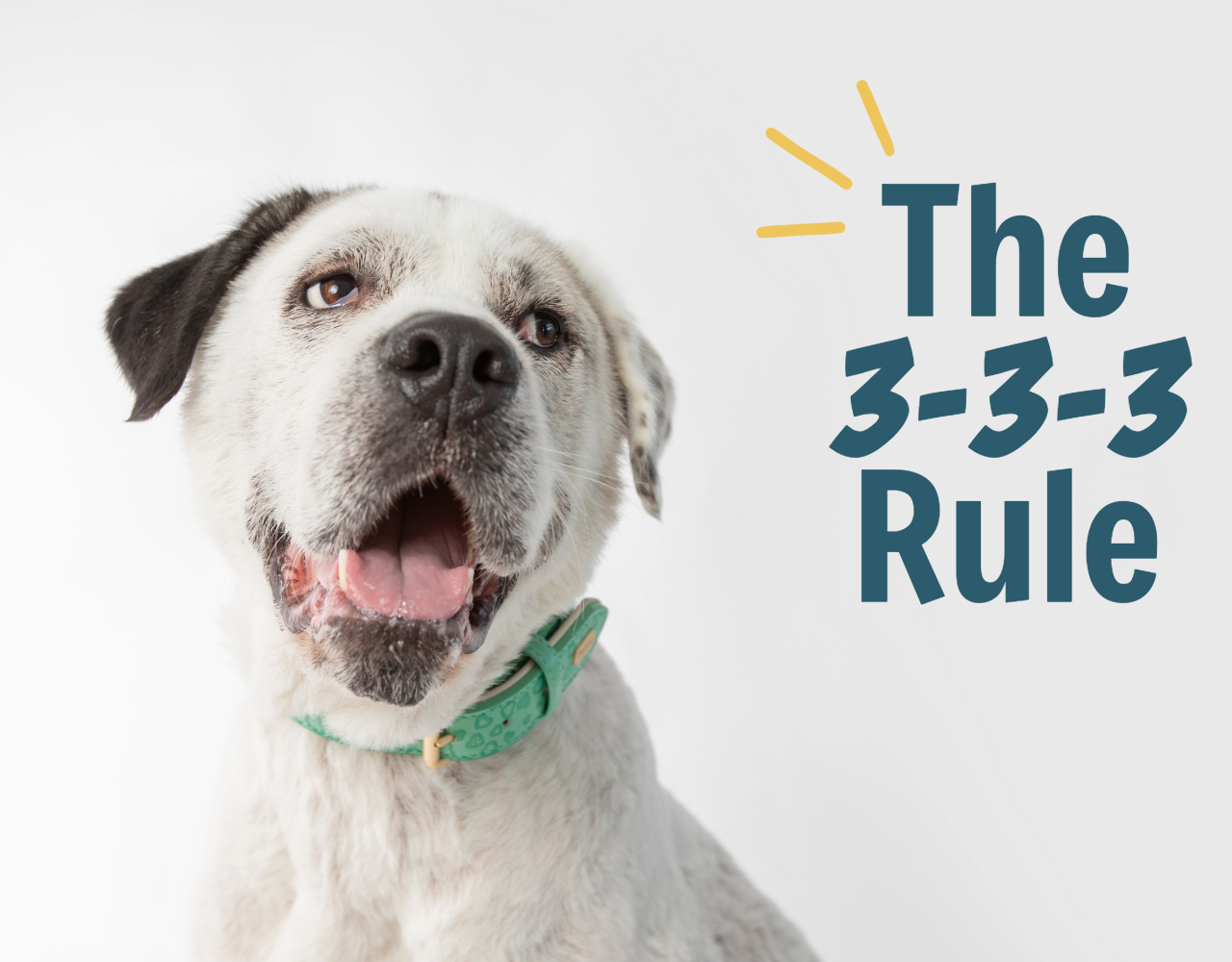Adopting a rescue dog is an incredibly rewarding journey, but it’s one that requires patience, understanding, and a willingness to adapt. Whether you’re a seasoned pet parent or welcoming your first furry friend, the 3-3-3 rule is an essential guide for helping your new dog adjust to their forever home. This framework outlines three critical phases in the adoption journey: the first three days, three weeks, and three months, offering a clear roadmap to a smooth transition for both you and your rescue pup.
What is the 3-3-3 Rule?
The 3-3-3 rule is a guideline that explains the stages a rescue dog typically goes through when adjusting to a new home:
- First Three Days: Adjusting to new surroundings.
- Next Three Weeks: Building trust and establishing a routine.
- First Three Months: Fully settling into their new life.
This rule helps set realistic expectations, ensures a compassionate approach, and provides structure for creating a stable and happy environment for your new dog.
The First Three Days: Adjusting to a New Home
The initial days are all about providing your dog with space and time to decompress. Rescue dogs often arrive at their new homes feeling anxious, confused, or overwhelmed. They’re adjusting to unfamiliar surroundings, new smells, and a completely different routine.
During this period, focus on making your dog feel safe:
- Create a Quiet Space: Set up a designated area where your dog can retreat to relax, such as a cozy corner with a bed or crate.
- Avoid Overwhelm: Limit visitors and keep new experiences, like walks or car rides, to a minimum.
- Let Them Set the Pace: Don’t force interaction; let your dog come to you when they’re ready.
Remember, it’s normal for your dog to show signs of stress, such as refusing food or hiding. Patience is key.
The Next Three Weeks: Building Trust and Establishing a Routine
As your dog starts to feel more comfortable, they’ll begin exploring their new environment and testing boundaries. This is the time to establish trust and introduce a consistent routine.
- Bonding Through Positive Reinforcement: Reward good behavior with treats, praise, and affection to help your dog associate you with safety and kindness.
- Introduce Basic Training: Start teaching simple commands like “sit,” “stay,” and “come.” Consistency and patience are essential.
- Build a Routine: Dogs thrive on predictability, so maintain consistent feeding times, potty breaks, and walks.
At this stage, your dog might also test limits, such as chewing on furniture or ignoring commands. Redirect unwanted behavior calmly and focus on reinforcing positive habits.
The First Three Months: Settling Into Their Forever Home
By the three-month mark, your dog should start feeling like a true member of the family. This phase is about deepening your bond and expanding their experiences.
- Socialization: Gradually introduce your dog to new environments, people, and other pets. Start with controlled settings, like meeting one dog at a time or visiting a quiet park.
- Continued Training: Build on basic commands and consider enrolling in a training class to work on more advanced skills.
- Encourage Play and Exploration: Provide toys, engage in interactive games, and let your dog explore their surroundings safely.
Every dog is unique, and some may take longer to fully adjust. Celebrate small victories and remain patient as your rescue pup learns to trust and thrive in their new home.
Overcoming Common Challenges
Adopting a rescue dog isn’t without its hurdles. Common issues like fear, anxiety, and behavioral quirks may arise, but these challenges can be managed with care and consistency.
- Seek Professional Support: If your dog struggles with severe behavioral issues, consult a trainer or animal behaviorist.
- Stay Positive: Use rewards and encouragement rather than punishment.
- Be Patient: Progress may be slow, but every step forward is a step toward a happier, healthier life for your dog.
Remember, rescue dogs often come from difficult pasts. Your love and support can be transformative.
Why the 3-3-3 Rule Matters
The 3-3-3 rule is more than just a guideline—it’s a compassionate approach to helping rescue dogs transition into a new life. It allows them the time they need to heal, trust, and fully embrace their new home. For adopters, it provides a framework to manage expectations and navigate the process with confidence.
By committing to these three phases, you’re not only giving your rescue dog the best possible start but also laying the foundation for a lifetime of love and companionship.
Adopting a rescue dog is a life-changing experience for both the dog and their adopter. With the 3-3-3 rule, you can ensure a smoother transition and give your furry friend the second chance they deserve. Your patience, love, and support will pave the way for a joyful and fulfilling life together.



